Abstract
Workers with long term exposure to mixtures of organic solvents below regulatory limits have been reported to experience mild, but clinically detectable, sensory or sensorimotor polyneuropathies. In conjuction with a cross sectional study of behavioural performance a clinical neurological evaluation was conducted among printers and spray painters to examine dose response relations. All 240 subjects completed an occupational history and symptom questionnaire and underwent a clinical neurological examination. On average, subjects had been employed on their current job for six years. Classification of solvent exposure for each subject was based on exposed versus non-exposed job titles and observations during an industrial hygiene walk-through or on the measured concentration of solvents in full shift personal air samples. The average full shift solvent concentration was 302 ppm for printing plant workers and 6-13 ppm for workers at other plants. Isopropanol and hexane were the major constituents. Neurological abnormalities consistent with mild polyneuropathy were found in 16% of subjects; none was clinically significant. Exposed/non-exposed comparisons showed slightly higher frequency of symptoms in the exposed subjects which was not related to solvent level. Subjects categorised as exposed during the walk- through survey also had poorer vibratory sensation measured at the foot and diminished ankle reflexes. In multiple linear regression models, however, controlling for age, sex, alcohol intake, and examiner, no significant (p less than 0.05) relation was found between solvent concentration and poor neurological function except for two point discrimination measured at the foot. This investigation has not provided evidence for dose related adverse neurological effects from exposure to moderately low levels of solvent mixtures for a relatively short duration, although this may be due to the shortness of exposure duration, the type of solvent exposure, or to selection factors.
Full text
PDF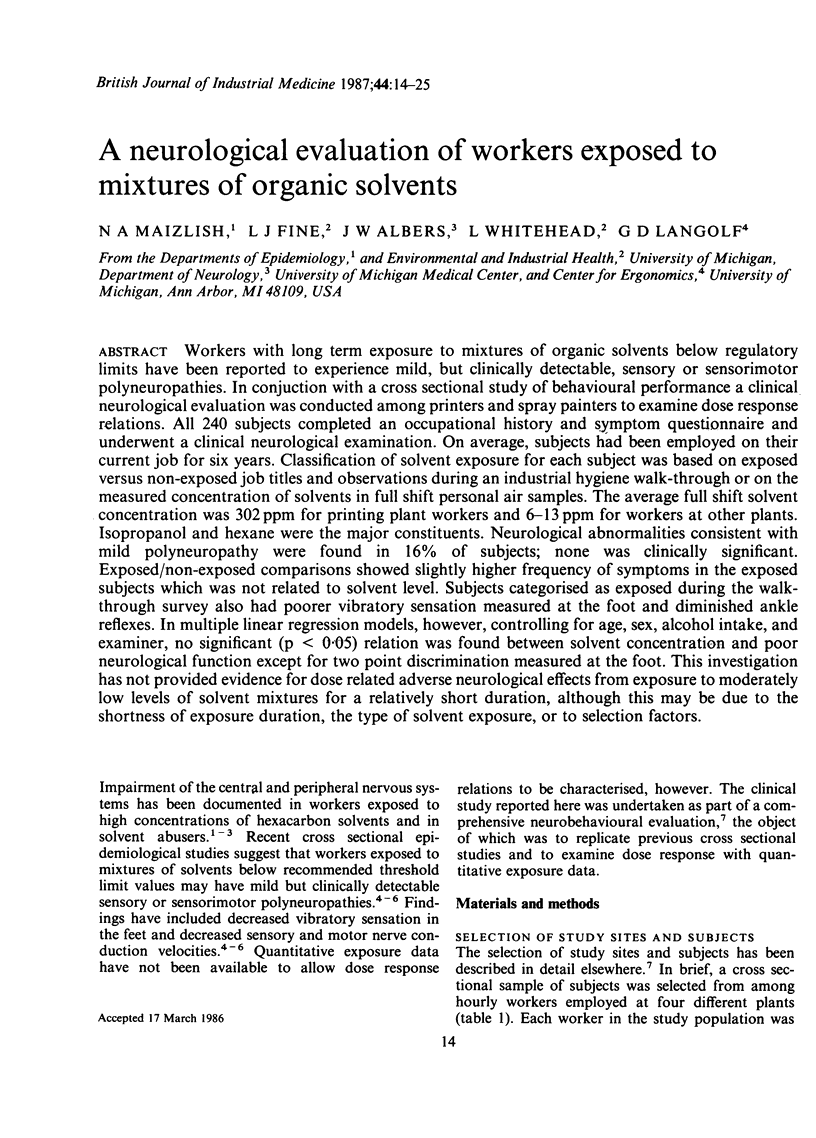
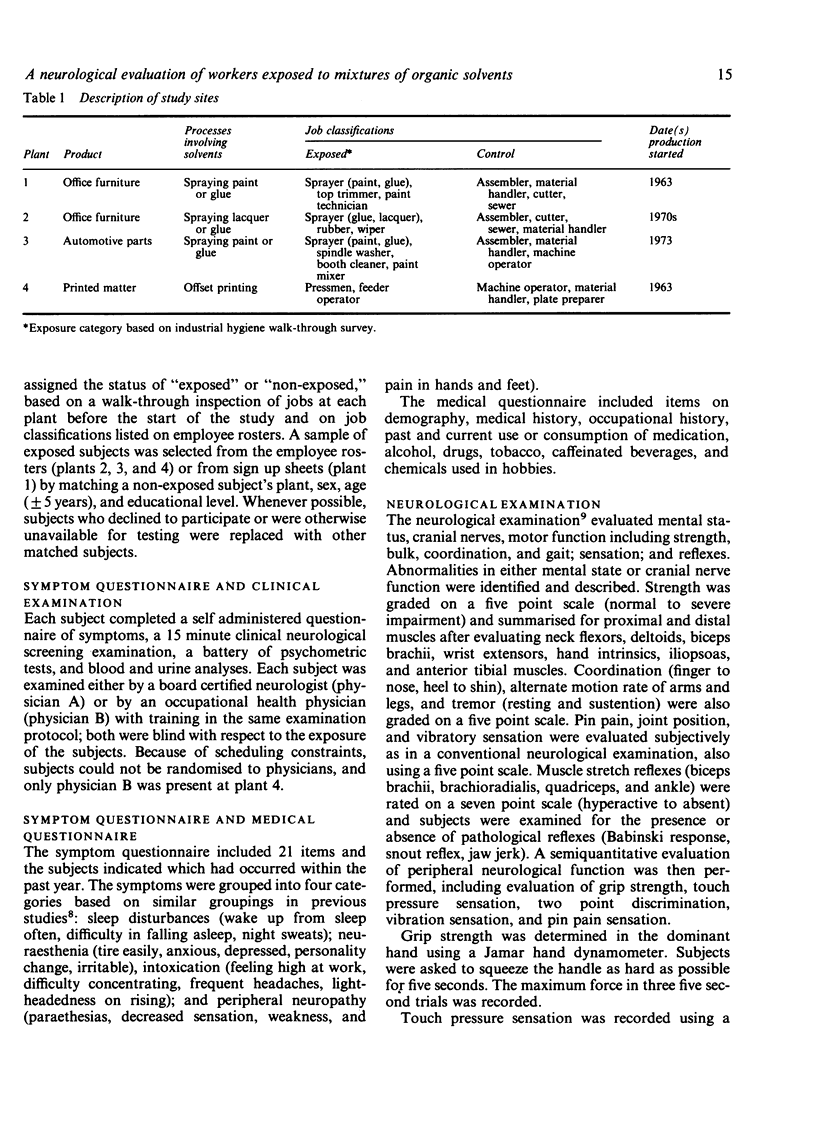
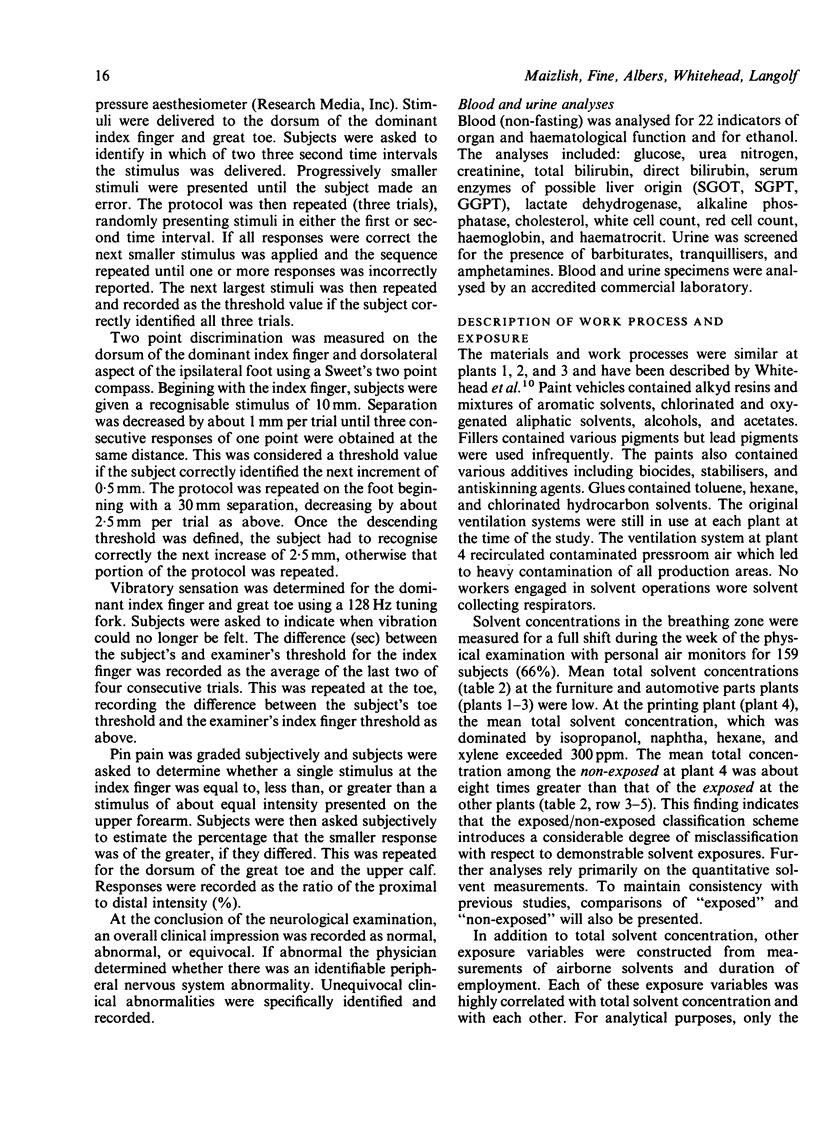
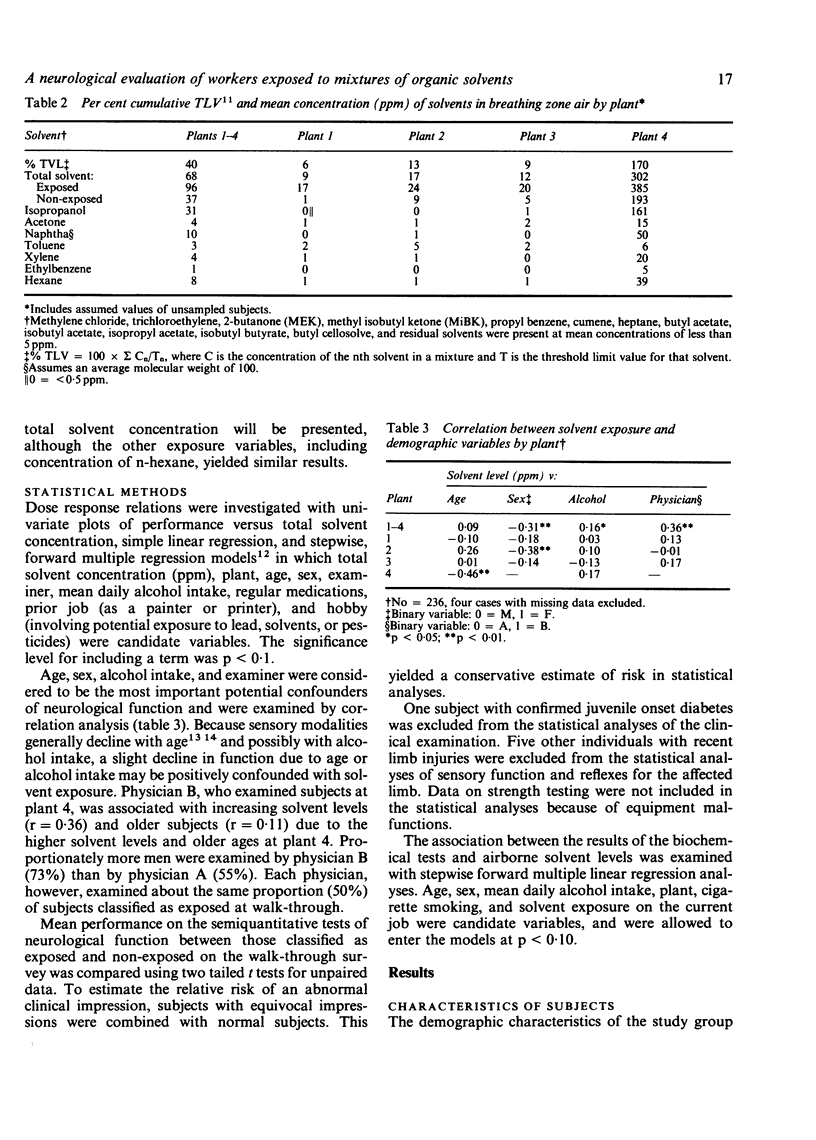
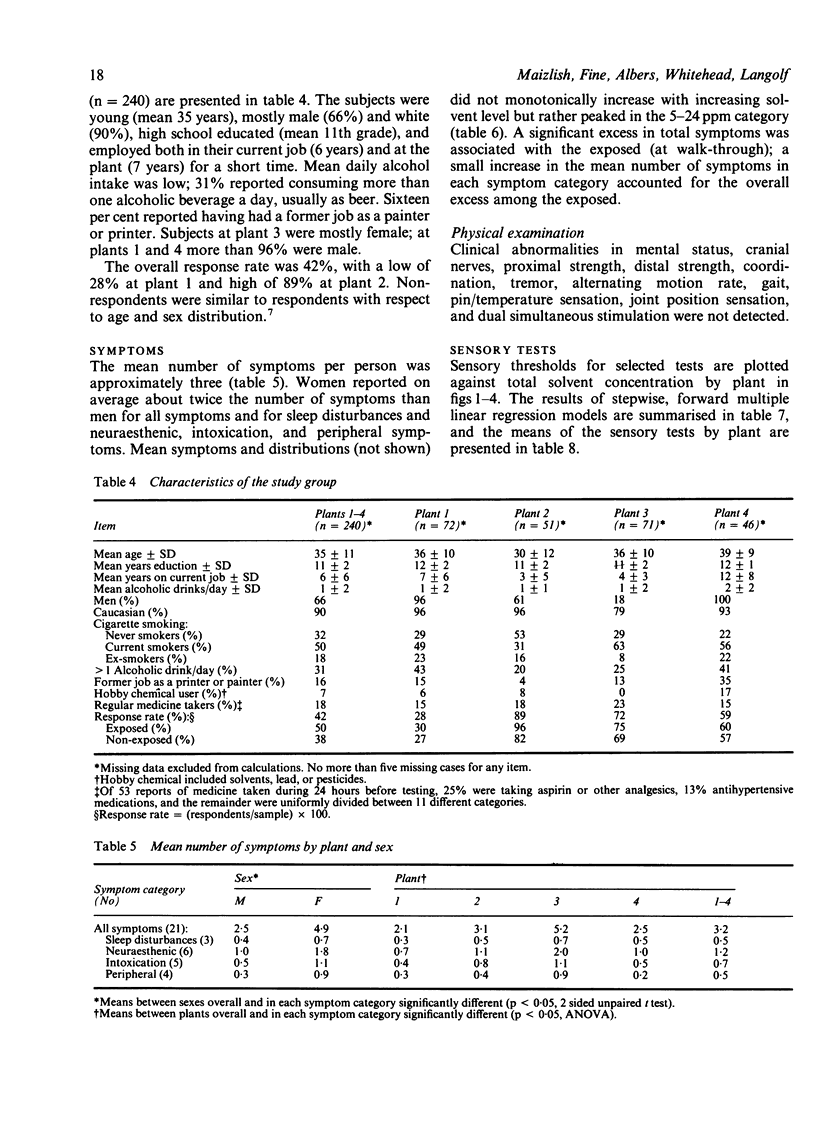
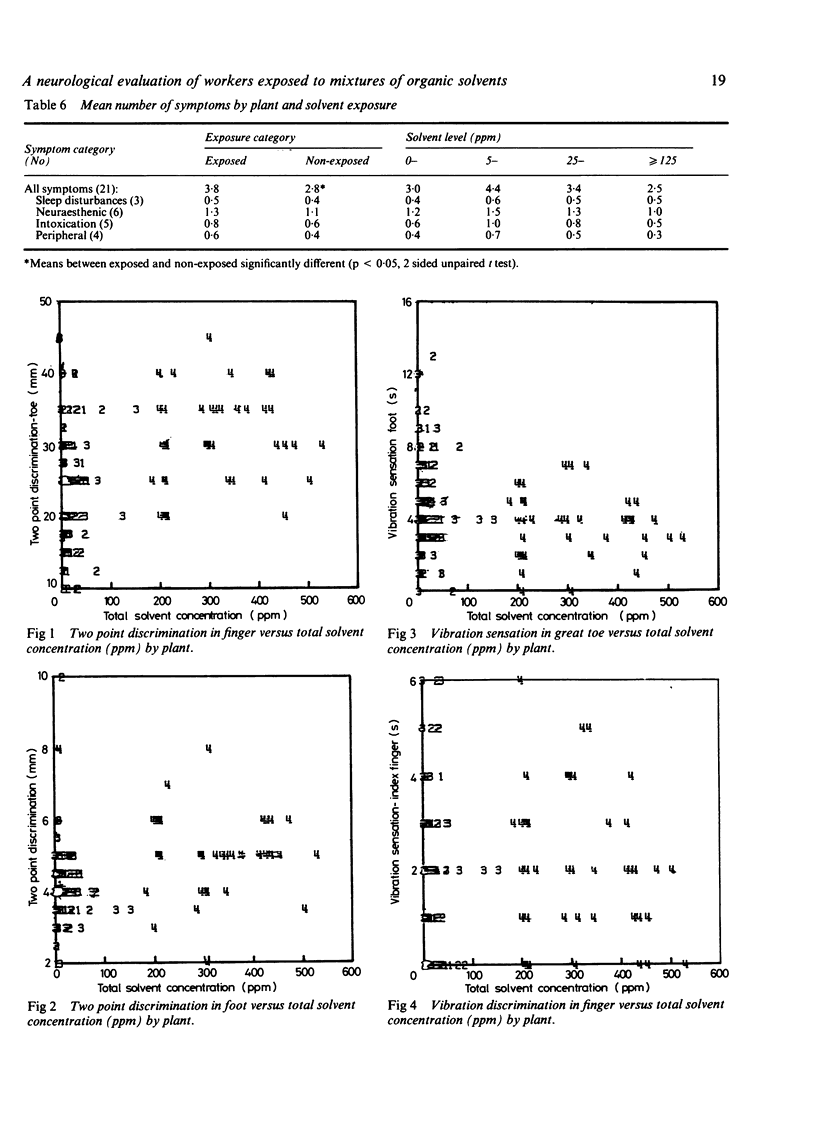
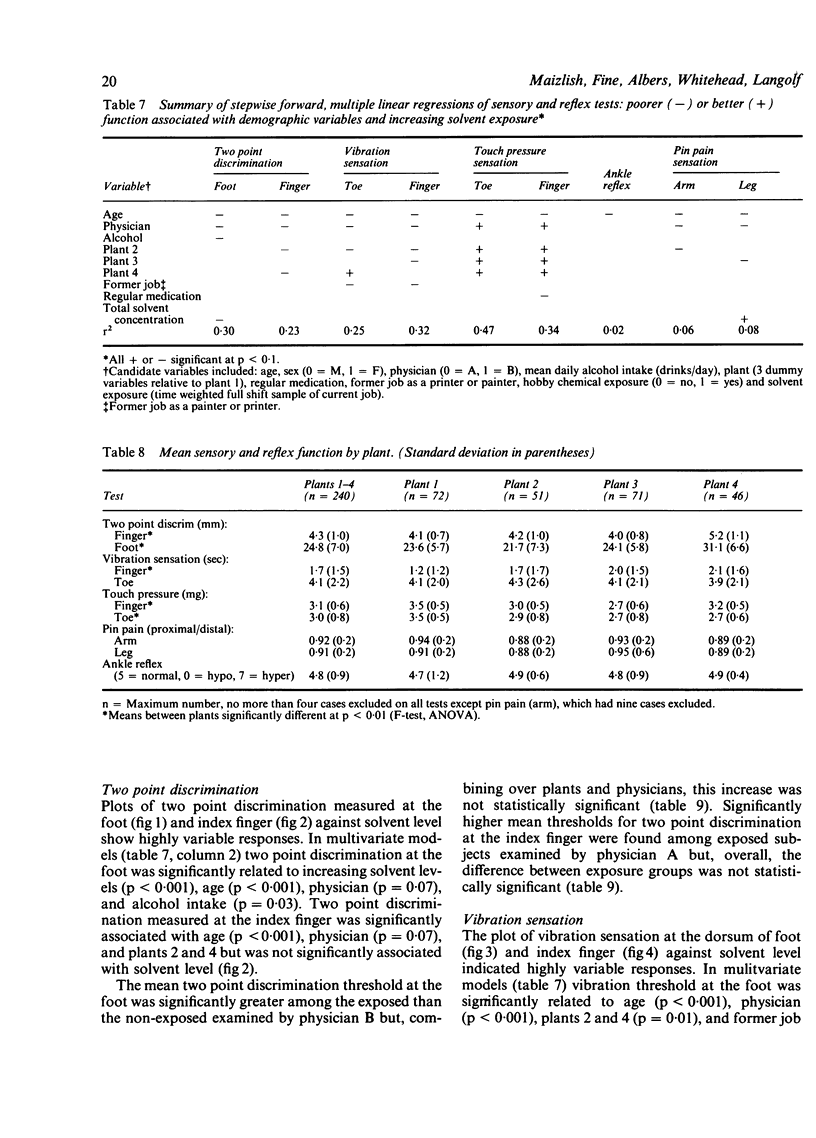
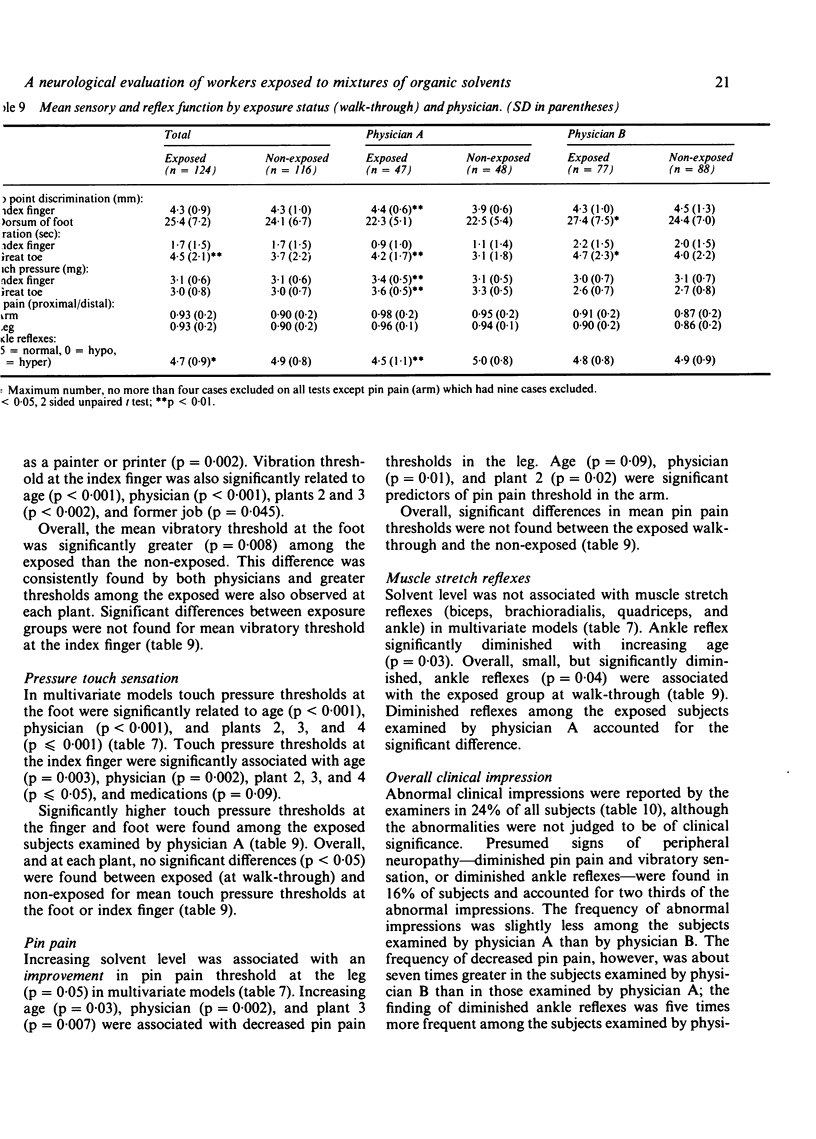
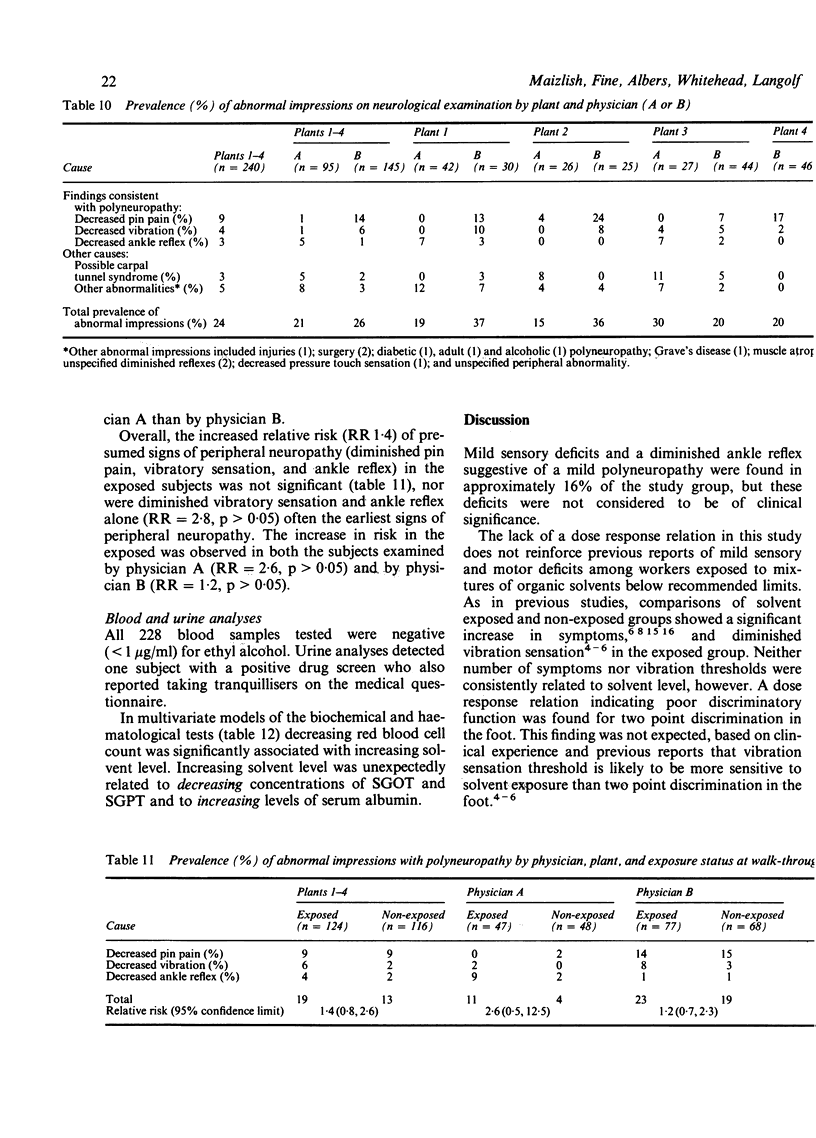
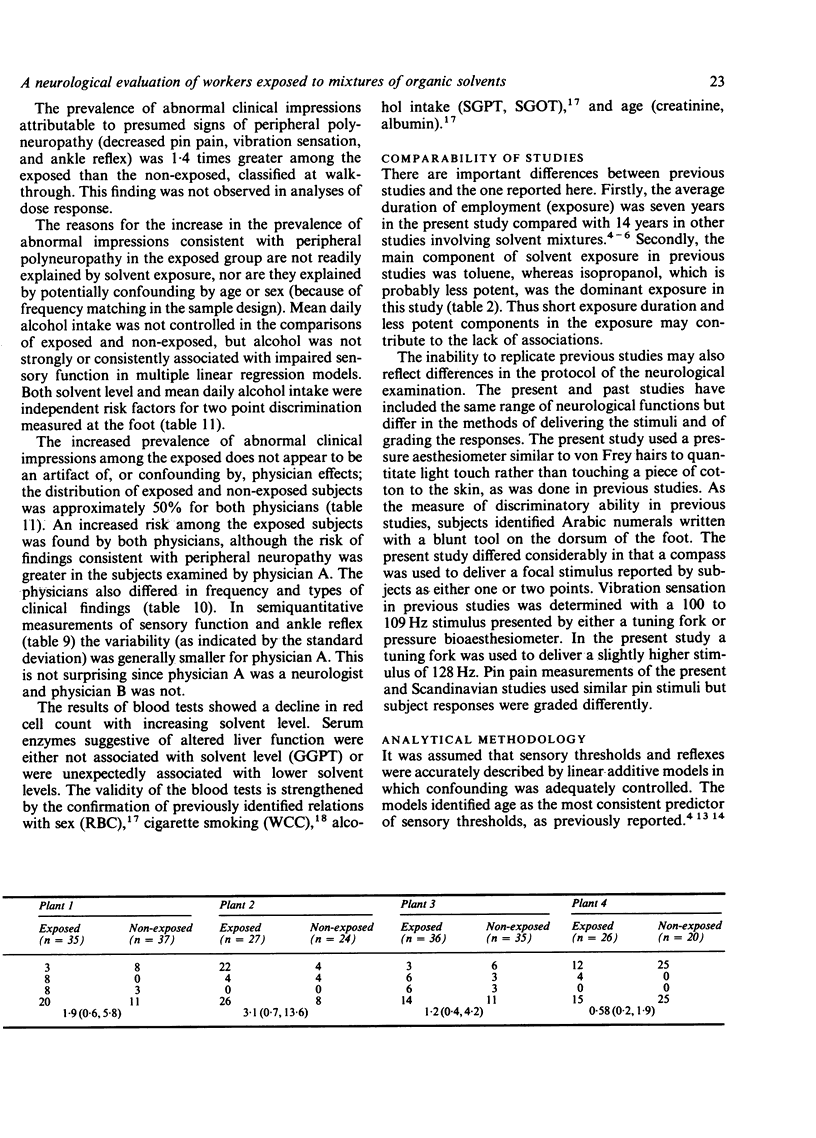
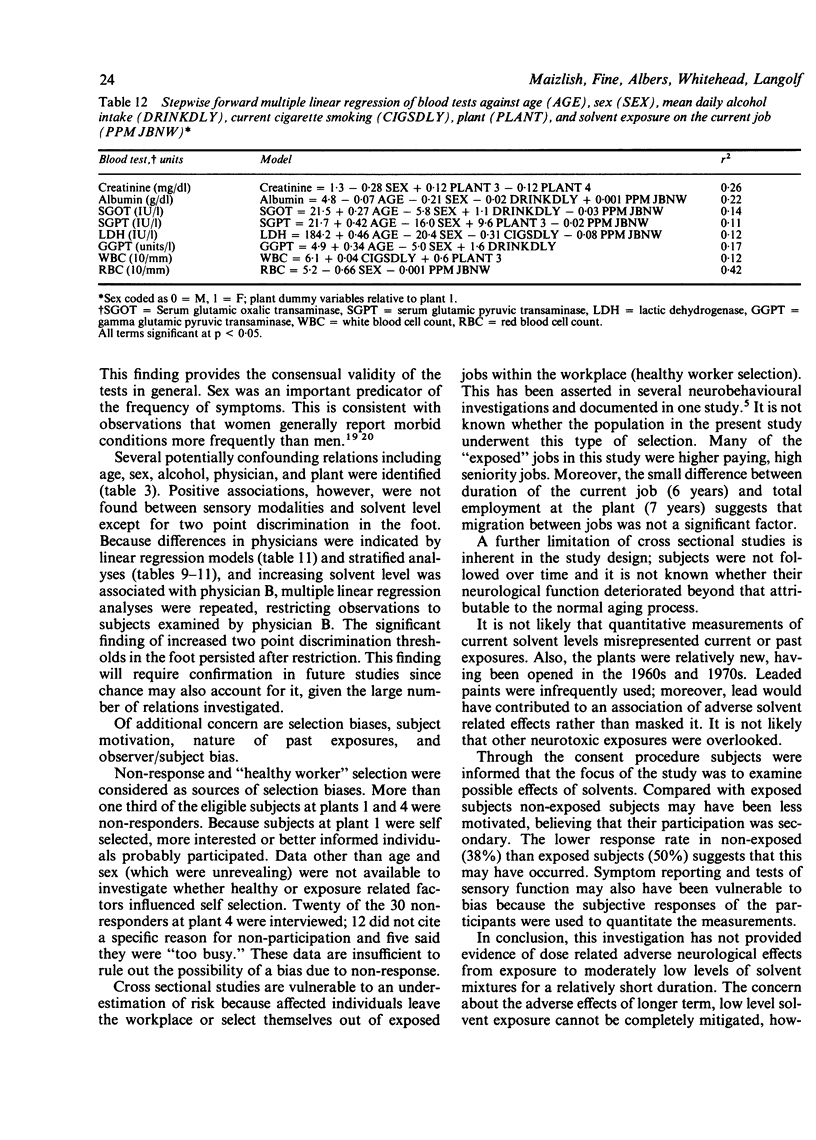

Selected References
These references are in PubMed. This may not be the complete list of references from this article.
- Albers J. W., Cavender G. D., Levine S. P., Langolf G. D. Asymptomatic sensorimotor polyneuropathy in workers exposed to elemental mercury. Neurology. 1982 Oct;32(10):1168–1174. doi: 10.1212/wnl.32.10.1168. [DOI] [PubMed] [Google Scholar]
- COSH J. A. Studies on the nature of vibration sense. Clin Sci. 1953 May;12(2):131–151. [PubMed] [Google Scholar]
- Cherry N., Waldron H. A., Wells G. G., Wilkinson R. T., Wilson H. K., Jones S. An investigation of the acute behavioural effects of styrene on factory workers. Br J Ind Med. 1980 Aug;37(3):234–240. doi: 10.1136/oem.37.3.234. [DOI] [PMC free article] [PubMed] [Google Scholar]
- Elofsson S. A., Gamberale F., Hindmarsh T., Iregren A., Isaksson A., Johnsson I., Knave B., Lydahl E., Mindus P., Persson H. E. Exposure to organic solvents. A cross-sectional epidemiologic investigation on occupationally exposed care and industrial spray painters with special reference to the nervous system. Scand J Work Environ Health. 1980 Dec;6(4):239–273. doi: 10.5271/sjweh.2609. [DOI] [PubMed] [Google Scholar]
- Griffin J. W. Hexacarbon neurotoxicity. Neurobehav Toxicol Teratol. 1981 Winter;3(4):437–444. [PubMed] [Google Scholar]
- Heinemann G., Schievelbein H., Eber S. Effect of cigarette smoking on white blood cells and erythrocyte enzymes. Arch Environ Health. 1982 Sep-Oct;37(5):261–265. doi: 10.1080/00039896.1982.10667576. [DOI] [PubMed] [Google Scholar]
- Husman K., Karli P. Clinical neurological findings among car painters exposed to a mixture of organic solvents. Scand J Work Environ Health. 1980 Mar;6(1):33–39. doi: 10.5271/sjweh.2638. [DOI] [PubMed] [Google Scholar]
- Husman K. Symptoms of car painters with long-term exposure to a mixture of organic solvents. Scand J Work Environ Health. 1980 Mar;6(1):19–32. doi: 10.5271/sjweh.2636. [DOI] [PubMed] [Google Scholar]
- Knave B., Olson B. A., Elofsson S., Gamberale F., Isaksson A., Mindus P., Persson H. E., Struwe G., Wennberg A., Westerholm P. Long-term exposure to jet fuel. II. A cross-sectional epidemiologic investigation on occupationally exposed industrial workers with special reference to the nervous system. Scand J Work Environ Health. 1978 Mar;4(1):19–45. doi: 10.5271/sjweh.2725. [DOI] [PubMed] [Google Scholar]
- Maizlish N. A., Langolf G. D., Whitehead L. W., Fine L. J., Albers J. W., Goldberg J., Smith P. Behavioural evaluation of workers exposed to mixtures of organic solvents. Br J Ind Med. 1985 Sep;42(9):579–590. doi: 10.1136/oem.42.9.579. [DOI] [PMC free article] [PubMed] [Google Scholar]
- Putz-Anderson V., Albright B. E., Lee S. T., Johnson B. L., Chrislip D. W., Taylor B. J., Brightwell W. S., Dickerson N., Culver M., Zentmeyer D. A behavioral examination of workers exposed to carbon disulfide. Neurotoxicology. 1983 Spring;4(1):67–77. [PubMed] [Google Scholar]
- Schaumburg H. H., Spencer P. S. The neurology and neuropathology of the occupational neuropathies. J Occup Med. 1976 Nov;18(11):739–742. doi: 10.1097/00043764-197611000-00010. [DOI] [PubMed] [Google Scholar]
- Whitehead L. W., Ball G. L., Fine L. J., Langolf G. D. Solvent vapor exposures in booth spray painting and spray glueing, and associated operations. Am Ind Hyg Assoc J. 1984 Nov;45(11):767–772. doi: 10.1080/15298668491400584. [DOI] [PubMed] [Google Scholar]


